One poet remarked: “The new becomes old…”. So and new house wears out over time: the material from which walls, ceilings, stairs (etc.) are made begins to “age”. There are more than enough reasons: these are power loads, and natural and climatic conditions, and, finally, it also affects how timely the malfunctions of common property were eliminated apartment building(MKD). No one will doubt the need repair work to restore housing stock. But for many, the difference between major and current repairs remains unclear. This issue of the Likbez series of articles will help clarify the differences between them.
What is included in current repairs?
Target current repair – support established performance of the home and common property: for example, repair minor faults and damage. In another way, such repairs are also called preventive. The name speaks for itself: due to the regular and extraordinary technical inspections of engineering systems at home, the range of work that needs to be carried out is revealed. prevention depreciation of common house equipment. And since technical condition houses are different, then the list of such works will be different, which means that the cost of ongoing repairs will also differ. For this simple reason, it is calculated separately from the tariff for the maintenance of the common property of an MKD (see Appendix No. 3 to the apartment building management agreement in the "Documents" section).
What works are carried out as part of the current repair? An approximate list of ongoing repairs is given in Appendix No. 7 Decree of the Gosstroy of the Russian Federation of September 27, 2003 No. 170 "On approval of the Rules and norms for the technical operation of the housing stock" . These recommendations correspond to the range of services offered by Region-L to residents. From their complete list can be found in Appendix No. 2 to the MKD management agreement.
Capital repairs. What is the difference from the current one?
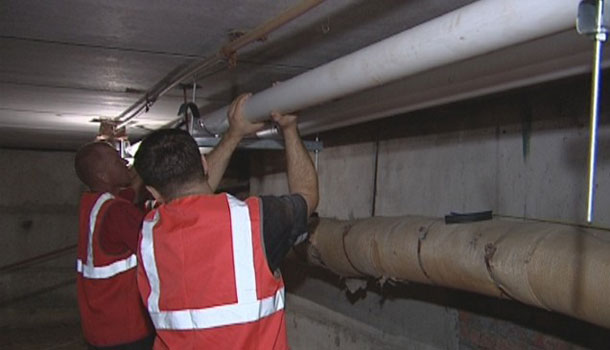 If the key word in defining the goals of the current repair was "maintenance", then in the case of major repairs, the emphasis shifts to improving the level of improvement
MKD. This is achieved through the use of durable and economical materials that are used along with new technologies. Worn-out sections of the engineering systems of the house and building elements are replaced or restored. Thus, MKD is being modernized, equipped with metering devices for resources (gas, electricity, water, heat).
If the key word in defining the goals of the current repair was "maintenance", then in the case of major repairs, the emphasis shifts to improving the level of improvement
MKD. This is achieved through the use of durable and economical materials that are used along with new technologies. Worn-out sections of the engineering systems of the house and building elements are replaced or restored. Thus, MKD is being modernized, equipped with metering devices for resources (gas, electricity, water, heat).
The cost of this kind of work is much higher than the current repair. For a long time they were covered at the expense of budgetary funds (for the history of undertaking obligations for financing the overhaul, read the article “Overhaul: how it all began”). Now, according to the law, the owners save up for it themselves.
An approximate list of works carried out during the overhaul can be found in the same Decree of the Gosstroy of the Russian Federation No. 170 (Appendix No. 8). On the website in the "Documents" section you can get acquainted with the planned overhaul works in the houses serviced by "Region-L".
So, the essence of the difference between the current repair work and the capital is as follows: the first are aimed at preserving what is (already declared operational properties of the house), and the second - at the modernization of the MKD, improving its characteristics. And although this requires a lot of money, the result is obvious: life in a warm and comfortable house, where the careful use of resources turns into savings on the family budget.
Repair work is a mandatory maintenance measure for any home. Maintaining the basic structure, communications and finishes in good condition allows you to use the house for a long time in accordance with its operational purpose. At the same time, the formats of repair work can be different. They determine the timing, lists of work activities, costs, safety standards, etc. The fundamental difference between current repairs and major repairs, which is expressed both in approaches to the organization of processes, and in the complexity of the operations performed.
Current repair definition
In accordance with the regulatory definition, current repairs are activities that are aimed at the timely and systematic protection of the serviced object from damage and malfunctions. In this case, the object means industrial buildings, communication networks, structures and residential buildings. In other words, the current repair of a house is a list of preventive measures aimed at repairing certain structures in the form of elements that form building objects.
Modern editions of the regulations emphasize that technical measures aimed specifically at eliminating existing problems. But when developing a project for an event, work may well be added that aims to strengthen workable elements. For example, preventive maintenance work may include reinforcing roof trusses, installing patches, installing protective frames on foundations and walls. Such solutions in the future eliminate the formation of new damage and destructive processes.

Overhaul Definition
Overhaul means the restoration or complete replacement of building structures, as well as engineering equipment with communications. On practice overhaul at home can be expressed in the complete or partial renewal of the appearance of the house, its internal arrangement and modernization. At the same time, there are restrictions that do not allow performers to completely eliminate the main structures - at least in cases where such work is contrary to the life of the house. That is, if the structure can be operated for 20-30 years, then it cannot be updated without obvious signs of destruction during repairs.
In essence, during the overhaul, the consequences of the functional or physical deterioration of objects are eliminated. Therefore, large-scale work is often carried out to upgrade engineering equipment and carriers with sections. In this context, the following difference between the current repair and the overhaul can be noted: if in the first case we are talking about working with local damage and breakdowns, then in the second, complex operations are performed that affect several interconnected elements.
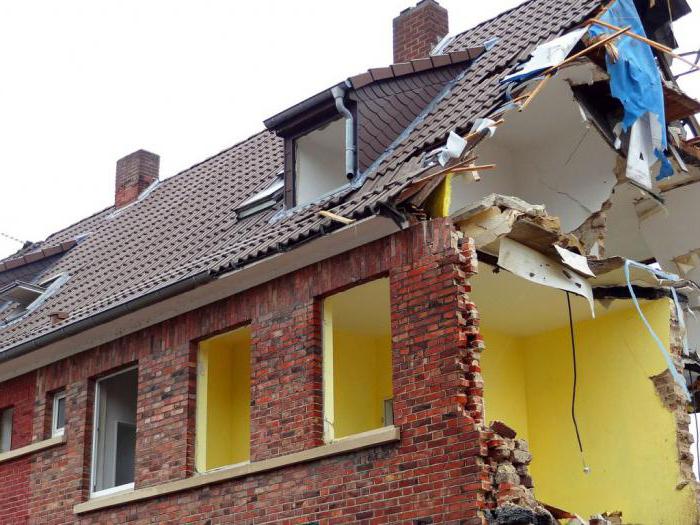
Differences by type of work
Technical operations during current repairs include repair, replacement, correction of structures, laying of cladding, planning of the local area, etc. The service team can replace individual elements of plumbing, restore a partially destroyed wall or renew the floor covering. That is, these are works that do not involve radical intervention in the structure and most often manifest themselves in the elimination of obvious external problems. At the same time, the norms of current and overhaul may overlap in the lists of works. For example, water supply, sewerage, and water supply in general, as objects, can be classified as current repair measures in the sense that, in order to restore working capacity, the contractor can update their elements up to risers and pumping units. But overhaul also takes on the same area, since engineering networks and communications are allotted to it - another thing is that in projects we can talk about systemic restoration of the working capacity of channels with a complete replacement of the infrastructure.
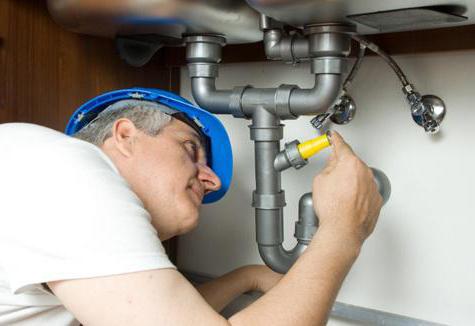
Funding difference
Differences in the organization and payment of repair activities are determined by the type of object. The house can be private and multi-family. In the first case, both capital and current repair measures are fully assigned to the owner. He is responsible for organizing and financing the renovation. However, this does not exclude the possibility of contacting a construction company, which, again, for a fee, will take over Maintenance houses of any complexity. If the matter concerns common property, then the difference between the current repair and the overhaul will be in the amount of payment. In each case, the amount of contributions is calculated individually - based on the condition of the house, region and other factors. Directly the organization and implementation of repair activities is assigned to the management company.
The difference in timing
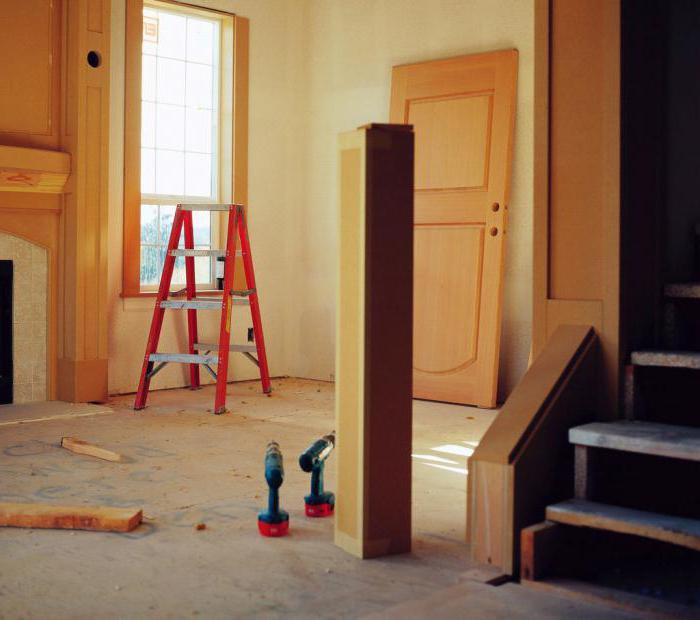
The need for current repairs, for obvious reasons, arises much more often than in the organization of major repairs. Therefore, the format of local technical operations is applied once every 3-6 months. But this is a conditional time range, since premature repairs of the building may be required if, for example, an accident occurs. It is important to emphasize that adjustments to the work schedule, as well as their list, can be changed by the residents of the house at a general meeting.
As for the overhaul, it is carried out every 3-5 years. In this case, the meeting of owners may also postpone the deadlines, if there are good reasons for that. The main difference between the current repair and the overhaul in this part is that when performing large-scale operations to update or replace the structures, the residents of the house must be notified in advance. This applies specifically to the overhaul, and current local events may even take place without informing.
Differences between overhaul and reconstruction

Often, the term reconstruction is introduced into the concept of overhaul, and sometimes current repair. From a technical point of view, such mixing may be fair - during reconstruction, work of the same complexity and in the same areas can be carried out. But the tasks of reconstruction are fundamentally different. For the current repair, the goal is to correct specific problems and damages, and the overhaul aims to eliminate systemic violations in the building structure - this is its content. Both current repairs and capital repairs are carried out to ensure that the building at least regains its previous condition with basic reliability and safety. In turn, reconstruction using the same technical tools is carried out in order to change the parameters of the building, even if it is currently in an optimal condition for operation.
Other nuances in the differences
The difficulty in distinguishing between the two formats for performing repairs lies in the fact that there are still no clear boundaries between them. For example, there is the concept of selective overhaul, which is aimed at partial replacement of building structures. But even within the framework of ongoing repair operations, it is possible to carry out such events. In addition, a comprehensive repair of a building in practice can include entire layers of operations, which are directly designated as a list of current repairs. Therefore, a strict demarcation can only take place at the moment when the project has already received the appropriate designation.
Conclusion
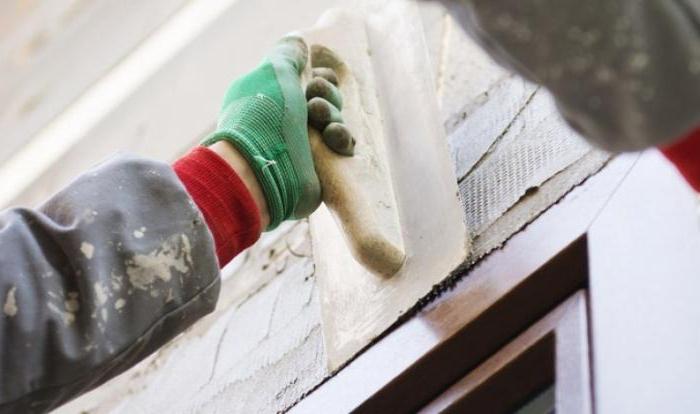
For the average layman, knowledge of the features of separation different types renovation can be of great importance, even if it is not connected with the formal organizational processes of such events. This is important, for example, for private owners who are planning a major overhaul of the house within a certain time frame with the connection of their own finances. Understanding how the overhaul differs from the current one will help classify the types of technical operations - accordingly, determine the degree of their complexity, as well as the responsibility of the performers. This is also important for residents of apartment buildings who are in legal and economic relations with management company carrying out repairs.
Many inexperienced people who want to start repairs in their home are interested in the question of how repairs differ from major repairs. This is not surprising, since those who have not encountered a similar problem know absolutely nothing about this issue. Some people do not suspect that the repair of apartments, for example, can be carried out not only by the owner himself, but also partially by the public utilities. depend on what needs to be done and how critical the situation is. If the apartment is in disrepair, it is always possible to request assistance from the city council. The same applies to the situation when it is planned to renovate buildings.
What is repair?
In order to correctly answer the question, what is the difference between repair and overhaul, you need to understand the process itself. What is repair? The concept of "repair" originally meant "replacement". And if you rely on this, an understanding of the essence of the process comes. Any action to improve appearance and functionality of the premises, and there is a repair. You must understand that the purpose of some processes is to update something, and others - to replace. The difference between these works entails different types designated process. Here such concepts as major and current repairs appear. To understand the difference, you need to study each of them separately.
What is the difference between repair and overhaul
 Now we abstractly imagine that the process can be planned not only in an apartment, but also in a private house, and is also carried out much more often than a capital one. It is done as needed, and this includes all work that is periodically carried out on the premises to replace some part or eliminate deficiencies. The work may concern part of the premises, or it may cover the entire building, but not affect the main structures. If we are talking about a major overhaul, then a complete replacement of the structure or part of the structure is already being carried out. In order to correctly present the difference in practice, we can give an example: for example, the roofing of a house is a major overhaul, and the installation of patches on the roof is current, or An important difference is that the latter option does not require large financial costs, unlike the first. Now let's look at each type separately.
Now we abstractly imagine that the process can be planned not only in an apartment, but also in a private house, and is also carried out much more often than a capital one. It is done as needed, and this includes all work that is periodically carried out on the premises to replace some part or eliminate deficiencies. The work may concern part of the premises, or it may cover the entire building, but not affect the main structures. If we are talking about a major overhaul, then a complete replacement of the structure or part of the structure is already being carried out. In order to correctly present the difference in practice, we can give an example: for example, the roofing of a house is a major overhaul, and the installation of patches on the roof is current, or An important difference is that the latter option does not require large financial costs, unlike the first. Now let's look at each type separately.
Maintenance
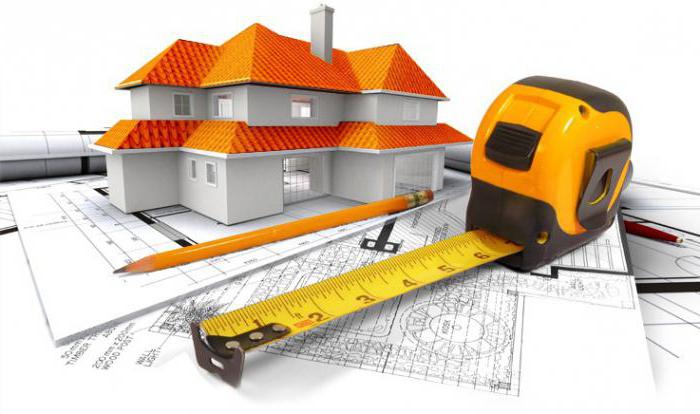 If we are tired of the boring interior or there is a need to update something in the appearance of the room, then we are talking about planning a cosmetic update. Repair of apartments or houses for a similar purpose may include the following types of work:
If we are tired of the boring interior or there is a need to update something in the appearance of the room, then we are talking about planning a cosmetic update. Repair of apartments or houses for a similar purpose may include the following types of work:
- pasting the walls with new wallpaper;
- whitewashing or painting ceiling tiles;
- replacement of door and window structures;
- installation of another type of ceiling (stretch, suspended, etc.);
- laying tiles;
- dismantling and changing floor coverings;
- all kinds.
The main difference from the capital option is that all the work does not affect the main structures of the apartment or house. No permits are needed to carry out such repairs, and both the owner himself and the teams hired by him can carry out it.
Overhaul
 Speaking of this type of work, experts mean global changes in the design of a house or apartment, including affecting load-bearing walls. One of the most important nuances of how a repair differs from a major overhaul is that in order to carry out a global process, it is necessary to obtain permission from the relevant services. The type of service depends on what kind of work you are going to carry out. For example, if you want to demolish a wall, you need to get permission from the architect of the building, if you change the heat pipe, you will need the consent of the heating network, etc. What can be attributed to this type of work?
Speaking of this type of work, experts mean global changes in the design of a house or apartment, including affecting load-bearing walls. One of the most important nuances of how a repair differs from a major overhaul is that in order to carry out a global process, it is necessary to obtain permission from the relevant services. The type of service depends on what kind of work you are going to carry out. For example, if you want to demolish a wall, you need to get permission from the architect of the building, if you change the heat pipe, you will need the consent of the heating network, etc. What can be attributed to this type of work?
- changing the layout of an apartment or building;
- global work with walls, floors and ceilings;
- complete replacement of the pipeline;
- replacement of all elements of the electrical circuit;
- laying tiles on walls and floors;
- updating all elements of plumbing in the house;
- installation of additional windows or doors;
- vent design.
If such repairs are planned in an apartment, then, having received all the permits, you can start work on your own or hire workers. If it concerns a public premises or building, then a pre-prepared project and an estimate for the work are required. The plan should detail the following points:
- a list of all items that need repair or replacement;
- list of works to be carried out;
- price assessment of each work;
- a list of materials that are needed for repairs, and their cost;
- indication of additional services (transport, workers);
- schedule and timing of the repair by stages.
Repair types
 Repair of buildings or apartments can be carried out in different ways, depending on the scope of work and the capabilities of the owner. Recently, more and more often we hear the word "European-quality repair". This is not a type of repair. This word means only the fact that the work is carried out in accordance with the requirements adopted in European countries. If we talk about types, then they distinguish.
Repair of buildings or apartments can be carried out in different ways, depending on the scope of work and the capabilities of the owner. Recently, more and more often we hear the word "European-quality repair". This is not a type of repair. This word means only the fact that the work is carried out in accordance with the requirements adopted in European countries. If we talk about types, then they distinguish.
Repair is not easy, but necessary. This is a big job that requires a lot of physical and material costs. Sometimes we really want to change the situation, add bright colors, change the design of the room. This is a serious matter and should be approached responsibly. However, most of those who undertook such changes do not have a construction education and cannot properly assess the scale of the work being done. Repair is divided into two types: major current and cosmetic. To begin with, let's try to analyze each type in more detail, and already in sequence to understand what are the differences between them.
As a rule, a major type of work involves the replacement of electrical wiring, windows, doors, roofs, appliances, grinding and painting walls, and flooring with new coatings. In other words, a complete reconstruction of the building, which may also include redevelopment. Basically, major repairs last about 20 years, provided that the owners take care of the house and constantly make small cosmetic updates.
Building renovations include:
- replacement of certain parts or some devices due to wear;
- replacement of technical equipment;
- carrying out a number of specific works to improve the degree of improvement of the premises inside (modernization);
- repair of window sills, skirting boards, slopes;
- choice of design project;
- installation of plumbing, pipes;
- wall preparation, painting;
- laying parquet, laminate, tiles;
- ceiling installation and more.
In the given case, the physical deterioration of the structure is completely or partially eliminated. The work provides for a change in engineering supplies and brings a second life to the building's structures.
In turn, major repairs are divided into subspecies:
- complex;
- selective.
In the first case, the whole building or its separate part, which is significantly worn out and in urgent need of renovation. And in the second option, as a rule, only a partial replacement of certain components of the building, which have partial or absolute wear and tear, is carried out.
Overhaul requires the use of only those materials that can fully satisfy all the requirements for reconstruction.
Maintenance
The current repair is aimed at transforming the external appearance of the building, which was previously used, the replacement of structures in this case is not carried out. Therefore, it is much easier to make an estimate, and the cost of such work, accordingly, is noticeably lower.
Repair work includes:
- installation of doors, plinths, slopes;
- replacement of plumbing;
- installation or replacement of switches;
- ceiling installation (drywall or stretch ceiling);
- wall painting;
- laying parquet, tiles, laminate;
- small decorative works and so on.
The time spent on current repairs is noticeably lower than in the case of major upgrades. In most cases it is 10-20 days.
It is worth noting and cosmetic repairs. It is mentioned in the article. As a rule, these are light non-essential works. This is a certain restoration of the premises with the aim of externally improving its aesthetic condition. Cosmetic repairs include painting walls, ceilings, floors, doors, baseboards, laying laminate or other floor coverings, and more.
Eurorepair is the modernization of a dwelling with the help of the latest technologies and methodologies. In this case, it is necessary to seek help only from highly qualified specialists. Here we are talking about such innovations as underfloor heating, installation of filters, electrical systems, and only an experienced master can be entrusted with such a thing.
The main differences between major and current repairs
After reviewing each type of work in more detail, we will try to identify the main differences between the two upgrades, which, at first glance, differ insignificantly:
- current repair changes the appearance of the room only to a small extent, helps to eliminate minor defects, which include cracks in the wall, peeling wallpaper, scratches on the flooring and much more;
- Anyone can carry out such work, special knowledge is not required for this. The main rule is to stock up on the necessary tools (brushes, rollers, glue, glue, sealant);
- current repairs take little time and financial investments, since the work is very insignificant;
- you can profitably and quickly restore the appearance of a living space, for example, paste wallpaper, paint the floor and walls, restore windows and doors;
- this kind of external transformation of buildings can be applied according to standard scheme, where the use of finishing materials is not at all necessary, and cases when they are necessary (replacing skirting boards, floor coverings, replacing wallpaper with painting).
Major overhaul is the opposite of the current one. And there are certain reasons for this:
- The capital method of reconstructing and changing the interior and appearance of the premises requires the use of additional structures. The easy way includes painting and decorating walls, replacing plumbing and electrics, and installation work. Complicated Method additionally includes the installation of various structures, including decorative ones (arches, niches, columns).
- It is better to entrust such a responsible matter to a specialist. Of course, you can do all the work yourself, but only an experienced craftsman is able to comply with all technologies and standards, give a guarantee for the work done and make the operation of the premises as safe as possible.
- Much more time is required for major repairs, as well as financial costs.
- The restoration of the premises takes much longer, but the work is done much better and the period between upgrades is much longer.
In addition to repairs, it is worth mentioning the reconstruction. This is a rather laborious process, where painting the walls and replacing the ceilings is not enough. Such works involve an impressive change in the appearance of the building - complete or partial. Reconstruction changes the size and shape of buildings.
Often, work is carried out to change the redevelopment of the structure and change the profile of the premises, for example, from an office to a retail outlet. Industrial buildings can be used after significant reconstruction for living, retail outlets, offices, hotel rooms. In other words, reconstruction is the introduction of changes in the design of a building to increase or decrease it, or change the target direction.
What will be the result of the information I receive?
In addition to showing off the knowledge gained, such experience will come in handy if you have to hire workers to carry out such repairs. In this case, without the help of a specialist, it is possible to determine the degree of work required and clearly define the goals set for the workers.
Since a major overhaul will require significantly more serious work and material costs than in the case of current changes, an excellent awareness of this issue will help you plan your own budget most competently.




